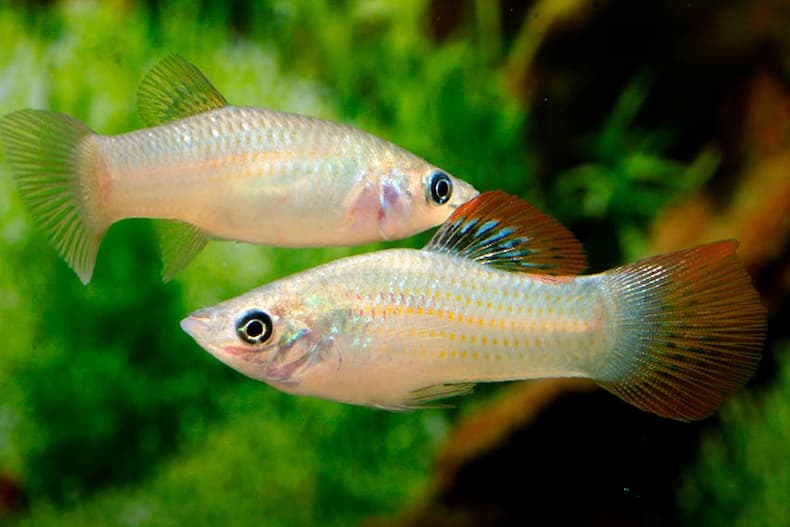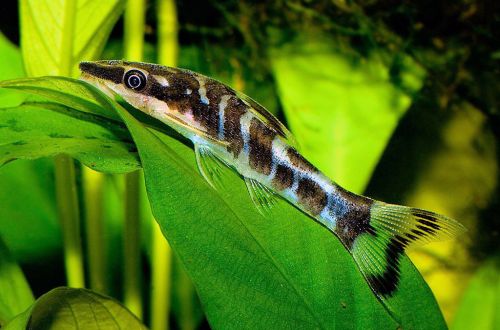
Freestyle mollies
Free Mollies or Free Mollies, the scientific name Poecilia salvatoris, belongs to the Poeciliidae family (Pecilian or Gambusian). The fish was discovered in 1907 and almost immediately after the description lost its species identity. For a long time it was considered a variety of Molly sphenops (Poecilia sphenops), then it was transferred to the subspecies of Molliesia Gill (Poecilia gillii) and only since the 2000s was it again isolated into an independent species.

Contents
Habitat
It comes from Central America from the territory of Honduras, El Salvador and Guatemala. Inhabits numerous shallow streams and rivers flowing down hilly terrain to the Pacific Ocean, as well as backwaters, lakes, swamps overgrown with water grass.
Description

Wild fish have a variety of colors and may even have morphological differences (the shape of the fins and body). Scientists sometimes disagree on what this is due to – ecological type, hybridization, or variations in sexual dimorphism. For example, young males are less colorful than adults. In addition, the brightness of the color may be due to social hierarchy, when the dominant individual suppresses the rest, the colors of the latter fade.
Adults reach a length of about 7 cm. Males have a silvery body with turquoise specks, an orange-red tail and dorsal fin with black spots. The body coloration of the females is similar, but the fins are colorless.
The free molly appeared in the aquarium trade as early as 1935, but at that time it was not possible to provide suitable living conditions for it. From generation to generation, the color faded and soon the colorless fish ceased to be interesting. It is now becoming popular again.
Brief information:
- The volume of the aquarium – from 100 liters.
- Temperature – 22-28°C
- Value pH — 7.0–7.5
- Water hardness – 12–20 GH
- Substrate type – any
- Lighting – any
- Brackish water – no
- Water movement is weak
- The size of the fish is about 7 cm.
- Food – any food
- Temperament – conditionally peaceful
- Content alone, in pairs or in a group
Food
In nature, they feed mainly on plant foods, but over the decades of living in the artificial environment of aquariums, they have successfully switched to alternative products. The basis of the daily diet can be dry and freeze-dried food (flakes, granules, tablets) containing plant components.
Maintenance and care, arrangement of the aquarium

The optimal size of the aquarium for a group of 3-4 fish starts from 100 liters. The design should provide for several areas with dense vegetation. Freestyle mollies prefer slightly alkaline water with high carbonate hardness. Maintaining the correct water composition can be difficult for the novice aquarist, so it is advisable to familiarize yourself with the methods of “Determining and changing GH and pH parameters”. Otherwise, the maintenance is quite simple and will require the aquarist to carry out a number of mandatory, but standard procedures: weekly replacement of part of the water with fresh water (20–30% of the volume), which can be combined with the removal of organic waste (food residues, excrement) from the soil surface, and regular preventive maintenance of equipment.
Behavior and Compatibility
In different sources, there is directly opposite information about the behavior of these fish. Some indicate that the Free Molly is a very temperamental and pugnacious fish, while others, on the contrary, indicate a peaceful disposition. In both cases, there is some truth. Fish are peacefully disposed towards other species, but within a species the situation is different. Males compete with each other for the attention of females, actively pursuing the latter. If the females have nowhere to hide, then the persecution can end sadly. Similar behavior extends to other species of Mollies. In small aquariums, it is desirable to maintain a community of one male and several females.
Breeding / breeding
A characteristic feature of this group of fish is the intrauterine gestation of eggs. They do not form a clutch, but produce fully formed offspring. In favorable conditions, fry appear regularly. Parental instincts are not developed, so adult fish will, on occasion, eat their own offspring. To save fry, it will be necessary to transplant them in a separate tank in time.
Fish diseases
In a healthy aquarium ecosystem, diseases rarely occur and are usually caused by environmental degradation, contact with sick fish, or injury. If this happens, it is necessary to restore the previous conditions and the body of the fish itself to cope with the disease. However, with a prolonged negative impact or a neglected case, medical treatment will be required. Read more about symptoms and treatments in the Aquarium Fish Diseases section.





